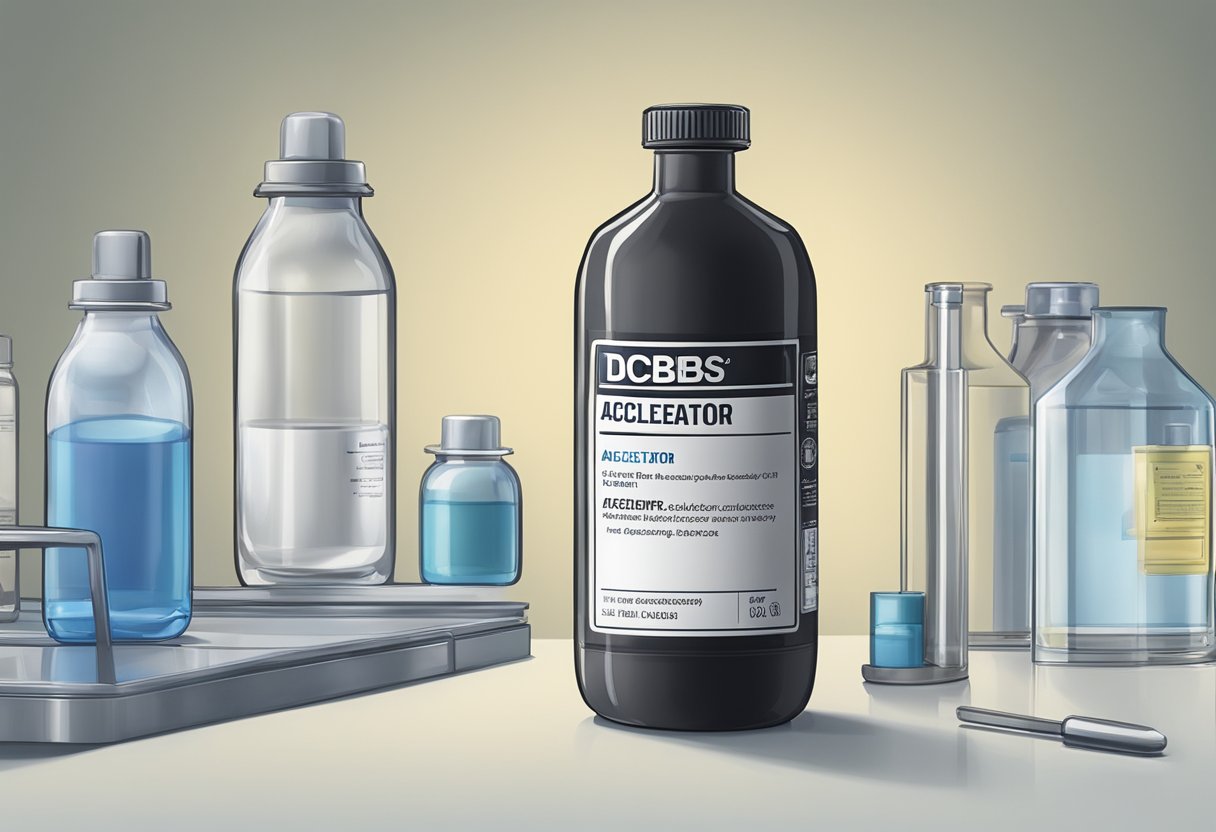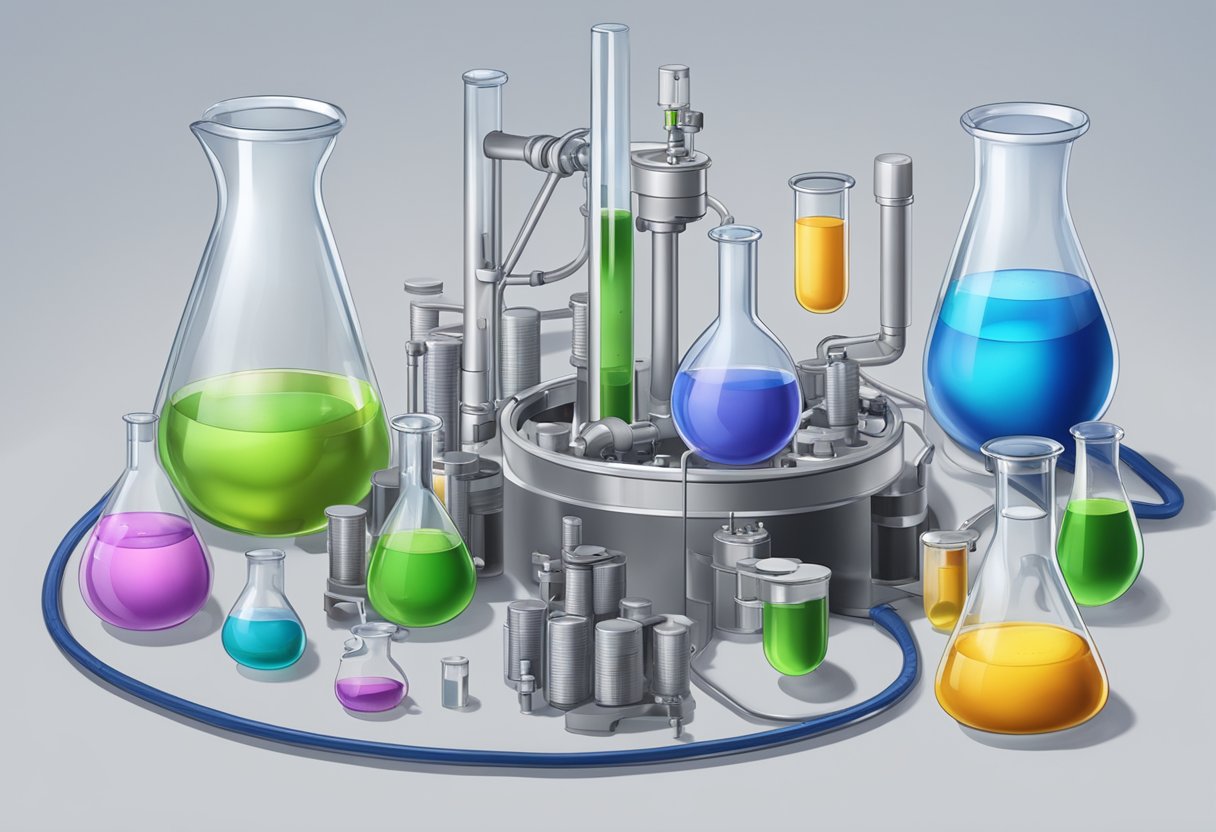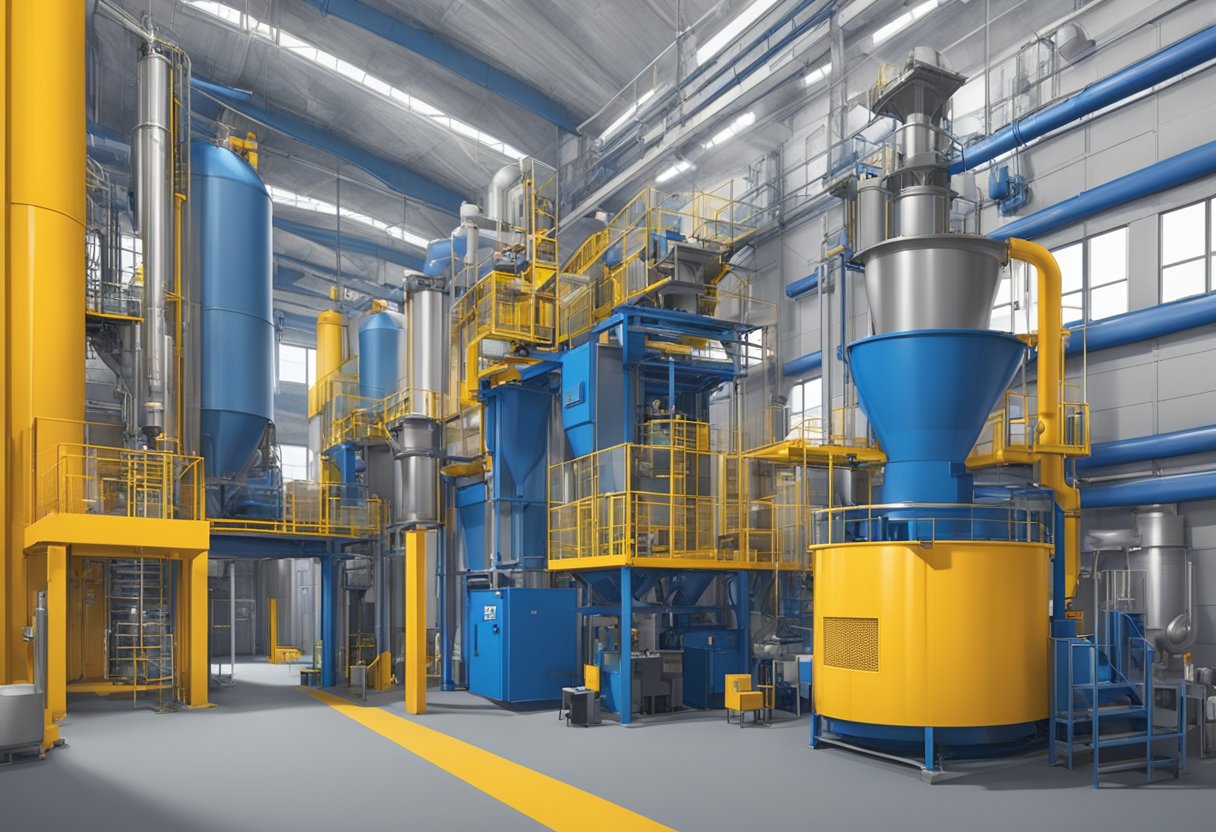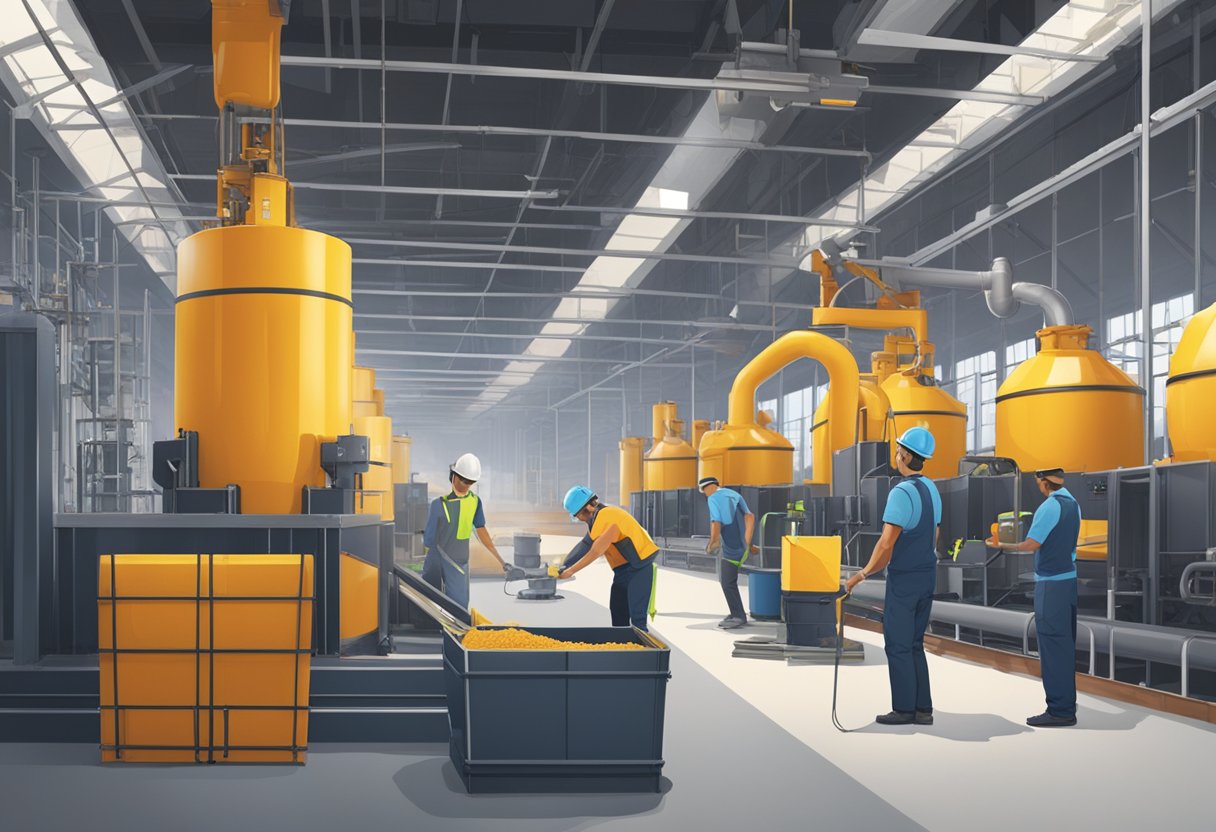DCBS Rubber Accelerator: Properties, Uses, and Benefits
19/01/2024
DCBS rubber accelerator is a chemical compound that is used in the rubber industry to improve the quality and performance of rubber products. This accelerator belongs to the family of sulfenamide accelerators, which are commonly used in the production of tires, conveyor belts, and other rubber products. DCBS is a popular choice for rubber manufacturers due to its fast curing time, high degree of cross-linking, and low toxicity.

DCBS is known for its ability to improve the physical properties of rubber products, such as tensile strength, elongation, and resilience. It works by promoting the chemical reaction between rubber molecules, which results in the formation of cross-links. These cross-links improve the strength and durability of the rubber, making it more resistant to wear and tear. DCBS is also effective at reducing the curing time of rubber products, which can help manufacturers increase their production efficiency.
Despite its benefits, chembord DCBS is not without its drawbacks. It can be toxic to humans and animals if ingested or inhaled, and it may cause skin irritation or allergic reactions. As a result, it is important for rubber manufacturers to handle DCBS with care and follow proper safety procedures. Overall, DCBS is a valuable tool for the rubber industry, but it must be used responsibly to ensure the safety of workers and consumers alike.
Chemical Properties of DCBS Rubber Accelerator

DCBS (N,N-Dicyclohexyl-2-benzothiazolesulfenamide) is a type of rubber accelerator that is commonly used in the production of tires, belts, hoses, and other rubber products. It is a pale yellow powder with a slight odor and is soluble in most organic solvents.
DCBS is classified as a delayed action accelerator, meaning that it does not start to work immediately upon addition to the rubber compound. Instead, it requires heat and time to activate, allowing for better control over the curing process.
The chemical structure of DCBS consists of a benzothiazole ring and a sulfenamide group. This unique structure allows DCBS to function as a vulcanization accelerator, promoting the cross-linking of rubber molecules and improving the strength and durability of the final product.
In addition to its vulcanization properties, DCBS also exhibits antioxidant activity, helping to protect the rubber from degradation and extending its lifespan. However, it is important to note that DCBS may cause skin and eye irritation and should be handled with care.
Overall, DCBS is a versatile and effective rubber accelerator that offers a range of benefits in the production of rubber products. Its unique chemical properties make it a valuable addition to any rubber compound, helping to improve performance and extend lifespan.
Production Process of DCBS

DCBS (N,N-Dicyclohexyl-2-benzothiazolesulfenamide) is a rubber accelerator widely used in the production of rubber goods due to its excellent properties. The production process of DCBS involves several stages, including the following:
Stage 1: Preparation of Raw Materials
The first stage of the production process involves the preparation of raw materials. The primary raw materials required for the production of DCBS are benzothiazole and cyclohexylamine. These raw materials are carefully selected and tested to ensure that they meet the required standards and specifications.
Stage 2: Synthesis of DCBS
In the second stage of the production process, the raw materials are mixed together and subjected to a series of chemical reactions to synthesize DCBS. The synthesis process involves the addition of sulfur, carbon disulfide, and other chemicals to the mixture, which is then heated and stirred for several hours.
Stage 3: Purification of DCBS
Once the DCBS has been synthesized, it is subjected to a purification process to remove any impurities or by-products that may have formed during the synthesis process. The purification process involves several stages, including filtration, washing, and drying.
Stage 4: Packaging and Distribution
The final stage of the production process involves the packaging and distribution of the DCBS. The DCBS is carefully packaged in sealed containers and labeled with the necessary information, including the batch number, date of manufacture, and expiry date. The packaged DCBS is then distributed to rubber goods manufacturers and other customers.
Overall, the production process of DCBS is complex and requires careful attention to detail to ensure that the final product meets the required standards and specifications.
Applications in the Rubber Industry

DCBS rubber accelerator is widely used in the rubber industry due to its excellent performance in accelerating the vulcanization of rubber. The following are some of the applications of DCBS in the rubber industry.
Tire Manufacturing
DCBS is an important ingredient in tire manufacturing. It helps to improve the physical properties of rubber, such as abrasion resistance, tensile strength, and elongation at break. DCBS also enhances the curing process of rubber, which results in a shorter curing time and higher productivity.
In tire manufacturing, DCBS is usually added to the rubber compound during the mixing process. The recommended dosage of DCBS varies depending on the type of tire and the specific requirements of the manufacturer.
Industrial Rubber Products
DCBS is also used in the production of industrial rubber products, such as conveyor belts, hoses, seals, and gaskets. It improves the mechanical properties of rubber, such as hardness, modulus, and compression set.
DCBS is added to the rubber compound during the mixing process, and the recommended dosage varies depending on the specific application and requirements of the manufacturer.
In summary, DCBS rubber accelerator is a versatile ingredient that improves the performance of rubber in various applications. Its use in the rubber industry is expected to increase in the coming years due to the growing demand for high-performance rubber products.
Advantages of DCBS Accelerators
DCBS accelerators have several advantages over other rubber accelerators. This section will discuss two of the main advantages: extended scorch time and improved aging characteristics.
Extended Scorch Time
One of the main advantages of DCBS accelerators is their extended scorch time. Scorch time is the time it takes for the rubber compound to start to vulcanize or crosslink. DCBS accelerators have a longer scorch time than many other accelerators, which allows for more time to process the rubber compound.
This extended scorch time is particularly beneficial for manufacturers who need to process large volumes of rubber compounds. With a longer scorch time, manufacturers can process the rubber compounds more efficiently, reducing waste and increasing productivity.
Improved Aging Characteristics
Another advantage of DCBS accelerators is their improved aging characteristics. Aging is a natural process that occurs over time, causing rubber to lose its elasticity and become brittle. DCBS accelerators help to slow down this process, resulting in rubber products that last longer and perform better over time.
This improved aging characteristic is particularly important for rubber products that are exposed to harsh environments, such as extreme temperatures or chemicals. With DCBS accelerators, manufacturers can produce rubber products that are more durable and reliable, even in challenging conditions.
In summary, DCBS accelerators offer several advantages over other rubber accelerators, including extended scorch time and improved aging characteristics. These benefits make DCBS accelerators an attractive option for manufacturers looking to produce high-quality rubber products that perform well over time.
Comparison with Other Accelerators
CBS Accelerators
DCBS rubber accelerator is often compared to CBS accelerators. While CBS accelerators are widely used in the rubber industry, they have some limitations. For instance, CBS accelerators tend to produce more nitrosamines, which are harmful to human health. On the other hand, DCBS accelerators have a lower nitrosamine generation rate, making them a safer alternative.
Another advantage of DCBS accelerators over CBS accelerators is their higher curing speed. This means that rubber products made with DCBS accelerators have a shorter curing time, which can increase productivity in manufacturing processes.
TBBS Accelerators
Another popular accelerator in the rubber industry is TBBS accelerators. Compared to TBBS accelerators, DCBS accelerators have a higher curing speed and a lower scorching tendency. This means that rubber products made with DCBS accelerators have a lower risk of scorching during the manufacturing process, resulting in a higher quality end product.
Additionally, DCBS accelerators are more effective at improving the physical properties of rubber, such as tensile strength and elongation. This makes them a preferred choice for applications that require high performance rubber products.
In conclusion, while there are other accelerators available in the market, DCBS rubber accelerators offer several advantages over CBS and TBBS accelerators. They have a lower nitrosamine generation rate, higher curing speed, and are more effective at improving the physical properties of rubber.
Handling and Storage Guidelines
DCBS rubber accelerator is a chemical compound that requires proper handling and storage to ensure its effectiveness and safety. The following guidelines should be followed:
Handling
When handling DCBS rubber accelerator, it is important to wear protective equipment such as gloves and goggles to avoid skin and eye contact. In case of contact, wash the affected area with water immediately and seek medical attention if necessary.
DCBS rubber accelerator should be stored in a cool and dry place away from direct sunlight, heat sources, and incompatible materials. It should be kept in airtight containers to prevent moisture and contamination.
Storage
The following table summarizes the recommended storage conditions for DCBS rubber accelerator:
| Storage Condition | Recommendation |
|---|---|
| Temperature | Below 25°C |
| Humidity | Below 60% |
| Light | Avoid direct sunlight |
| Ventilation | Adequate ventilation |
| Incompatible materials | Store separately from oxidizing agents, acids, and alkalis |
DCBS rubber accelerator should not be stored for long periods of time as it may lose its effectiveness. It is recommended to use the oldest stock first and rotate the stock regularly to ensure freshness.
By following these handling and storage guidelines, the effectiveness and safety of DCBS rubber accelerator can be maintained, ensuring optimal performance in rubber production.
Environmental Impact and Safety
Regulatory Compliance
DCBS rubber accelerator is a chemical substance that requires regulatory compliance to ensure safety for both the environment and human health. The United States Environmental Protection Agency (EPA) has set regulations on the use of DCBS. The EPA regulates the production, use, and disposal of DCBS rubber accelerator under the Toxic Substances Control Act (TSCA).
The TSCA requires manufacturers and importers of chemical substances, including DCBS rubber accelerator, to report any significant adverse effects on human health or the environment. Additionally, the EPA has set limits on the amount of DCBS that can be used in rubber manufacturing.
Disposal and Recycling
DCBS rubber accelerator is considered a hazardous waste and must be disposed of properly to avoid environmental contamination. The EPA has set guidelines for the disposal of hazardous waste, and it is important to follow these guidelines to protect the environment.
Recycling of DCBS rubber accelerator is also possible, and it can be done through various methods such as chemical recycling, mechanical recycling, and energy recovery. Recycling helps to reduce the amount of waste generated and decreases the environmental impact of DCBS rubber accelerator.
In conclusion, regulatory compliance and proper disposal and recycling methods are crucial to minimize the environmental impact and ensure the safety of DCBS rubber accelerator. Manufacturers and users must follow the guidelines set by the EPA to maintain a safe and sustainable environment.
Market Trends and Demand
DCBS rubber accelerator has become increasingly popular in the global market due to its excellent performance in the vulcanization process of rubber products. The market demand for DCBS rubber accelerator has been on the rise, with a CAGR of 3.5% from 2019 to 2024.
The automotive industry is the primary driver of the demand for DCBS rubber accelerator. The increasing demand for automobiles worldwide has led to a surge in the demand for rubber products, such as tires, hoses, and belts. DCBS rubber accelerator is a crucial component in the production of high-quality rubber products, which has contributed to its increasing demand.
The Asia-Pacific region dominates the DCBS rubber accelerator market, accounting for over 40% of the global market share. The region’s dominance is attributed to the growing automotive industry and the increasing demand for high-quality rubber products in countries like China, India, and Japan.
In addition to the automotive industry, the construction industry is also contributing to the rising demand for DCBS rubber accelerator. The growth in the construction industry has led to an increase in the demand for rubber products, such as seals, gaskets, and roofing materials, which require DCBS rubber accelerator in their production process.
Overall, the market trend for DCBS rubber accelerator is positive, and the demand is expected to continue to grow in the coming years. The increasing demand from the automotive and construction industries, coupled with the product’s excellent performance, makes DCBS rubber accelerator a promising investment for manufacturers and investors alike.
Innovation in Accelerator Formulations
DCBS rubber accelerator is a widely used chemical in the rubber industry due to its ability to improve the performance of vulcanized rubber products. In recent years, there has been a growing demand for more efficient and sustainable accelerator formulations.
To meet this demand, innovative research has been conducted to develop new accelerator formulations that offer improved performance and reduced environmental impact. One such innovation is the use of natural rubber-based accelerators, which are derived from renewable resources and have lower toxicity compared to traditional accelerators.
Another area of innovation is the development of multi-functional accelerators, which can provide multiple benefits such as improved scorch safety, increased vulcanization rate, and reduced cure time. These accelerators can help reduce the amount of chemicals required in the vulcanization process, leading to cost savings and improved sustainability.
Advancements in nanotechnology have also led to the development of nano-accelerators, which can provide superior performance compared to traditional accelerators. These accelerators have a higher surface area and can promote faster and more efficient vulcanization, resulting in improved product quality and reduced energy consumption.
Overall, the rubber industry is constantly evolving, and new innovations in accelerator formulations are helping to improve the performance and sustainability of rubber products. With continued research and development, the industry can continue to meet the growing demand for high-quality rubber products while minimizing its environmental impact.
Challenges and Limitations
Despite its numerous advantages, DCBS rubber accelerator also has some challenges and limitations that should be considered.
1. High Cost
DCBS is relatively expensive compared to other rubber accelerators, which can make it less attractive to some manufacturers. The high cost of DCBS is due to the complex production process, which involves several steps and requires the use of expensive raw materials.
2. Limited Availability
DCBS is not widely available in many regions, which can make it difficult for manufacturers to obtain it. This limited availability is due to the fact that DCBS is not produced in large quantities and is not widely used in the rubber industry.
3. Toxicity
DCBS is classified as a toxic substance and can cause harm to human health if not handled properly. Exposure to DCBS can cause skin irritation, respiratory problems, and other health issues. Therefore, manufacturers must take appropriate safety measures when handling DCBS to ensure the safety of their workers.
4. Compatibility Issues
DCBS may not be compatible with all types of rubber, which can limit its use in certain applications. Manufacturers must test the compatibility of DCBS with different types of rubber to ensure that it will work effectively in their products.
In conclusion, while DCBS has many benefits, it also has some challenges and limitations that must be considered by manufacturers. The high cost, limited availability, toxicity, and compatibility issues of DCBS should be carefully evaluated before deciding to use it in rubber products.
Future Outlook on DCBS Accelerators
DCBS accelerators have shown promising results in the rubber industry, and the future outlook for these accelerators seems positive. Here are some of the reasons why:
- Increasing demand: The demand for rubber-based products is increasing, and with it, the demand for accelerators. DCBS accelerators have shown to be effective in improving the properties of rubber, and as a result, their demand is expected to rise in the future.
- Technological advancements: With the advancement of technology, the production of DCBS accelerators has become more efficient, resulting in lower costs and higher quality. This has made DCBS accelerators more accessible to manufacturers, which is expected to further boost their demand.
- Environmental regulations: Environmental regulations are becoming more stringent, and rubber manufacturers are under pressure to reduce their environmental impact. DCBS accelerators are known for their low toxicity and eco-friendliness, making them a preferred choice for manufacturers looking to reduce their environmental footprint.
- Research and development: Research and development in the rubber industry is ongoing, and this is expected to lead to the development of new and improved DCBS accelerators. These new accelerators are expected to have better properties and be more cost-effective, further driving their demand.
Overall, the future outlook for DCBS accelerators is positive, and they are expected to play an important role in the rubber industry in the coming years.




